What Was The Hardest Part In Training To Go To Space?
What was the hardest part in training to go to space?
One of the most challenging parts of space training was learning how to use the space suit. We weigh over 400 pounds in the space suit, and since it is pressurized, each movement of your hands is like working against an exercise ball. Since the suit needs to be quite bulky in order to protect us from the environment of space (vacuum, radiation, micrometeoroids, extreme temperature) while doing a spacewalk, it makes body movements a bit awkward. Dexterity is quite compromised with the bulky gloves as well. Although it is challenging, however, it is likely also the most rewarding, because, well, you are in a SPACE SUIT!!! Hopefully I’ll get to do a spacewalk and look down on the our planet from above on a mission to the International Space Station in a few years.
More Posts from Nasa and Others
How did you choose your Flight Director name?
Space Gardening 101
You can’t escape eating (or gardening!) your vegetables, even if you’re in space. On Aug. 10, astronauts on the International Space Station sampled their first space grown salad. This freshly harvest red romaine lettuce was grown in the “Veggie” plant growth chamber that is designed to make gardens flourish in weightlessness.
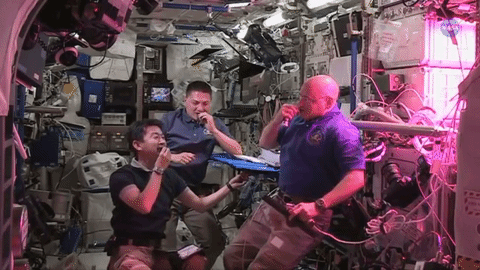
In a weightless environment, there is no up and down, so roots grow in all directions. Water and soil, the materials used to anchor these plants and allow for root growth tend to float away.
How Do We Grow Plants in Space?
1. Plant Pillows
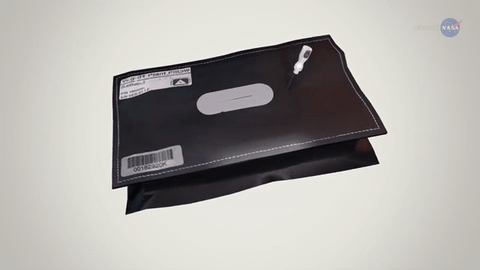
The Veggie chamber helps solve the problems of a weightless environment by using ‘plant pillows’, sounds comfy right? These pillows are bags filled with material for growing plants in space.
2. Wicks

Wicks are implanted into the bags and are used to draw water from inside the pillow to the plant.
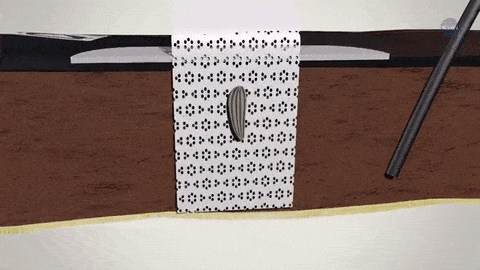
These wicks also provide a place to glue the seeds. It’s important to orient the seeds so roots will grow ‘down’, and shoots that emerge will push out of the bag.
3. LED Lights
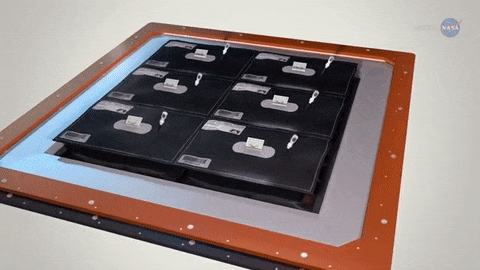
LED lights are used for photosynthesis and give the shoots a sense of direction so they keep growing upward. The walls of the Veggie chamber can expand to make room for the plant as it grows.
The purple/pinkish hue surrounding the plants in Veggie is the result of a combination of the red and blue lights, which is what the plants need to grow. Green LEDS were added so the plants look like edible food rather than weird purple plants.
Why are we growing plants in space?
When astronauts travel on deep space missions, like Mars, they will need to be self-sufficient for long periods of time. Having the ability to grow their own food is a big step in that direction. There is also a desire to grow flowering vegetables in space, which is why we are currently tending to zinnia flowers on orbit. Growing these flowering plants will help us understand longer duration growing plants that have to flower in space, such as tomatoes.
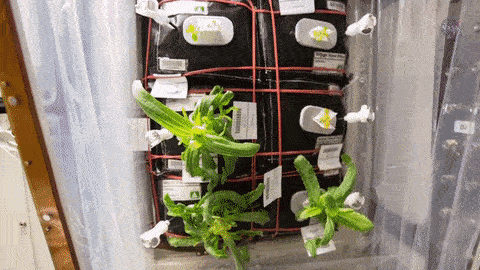
What’s Next? The next SpaceX delivery will include seeds for a small cabbage and additional red romaine lettuce. Upcoming experiments will use various ratios of red and blue lights and different fertilizers in attempts to improve crop yield, nutrition and flavor. The findings from these experiments can be utilized both on Earth and in space.
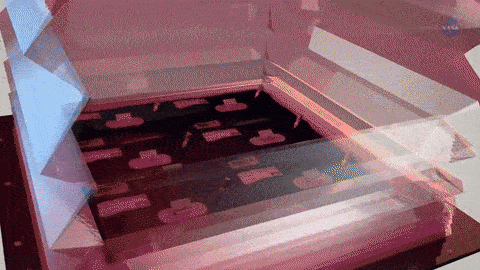
In addition to the nutrition benefits of growing vegetables in space, the psychological benefits are also significant. Having living plants can help with stress and increase the crews’ enjoyment. It provides the sights, smells and tastes of Earth.
To learn more about gardening in space, watch ScienceCast HERE.
Make sure to follow us on Tumblr for your regular dose of space: http://nasa.tumblr.com
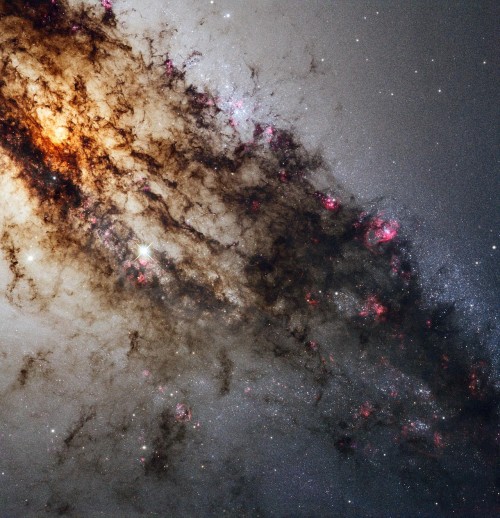
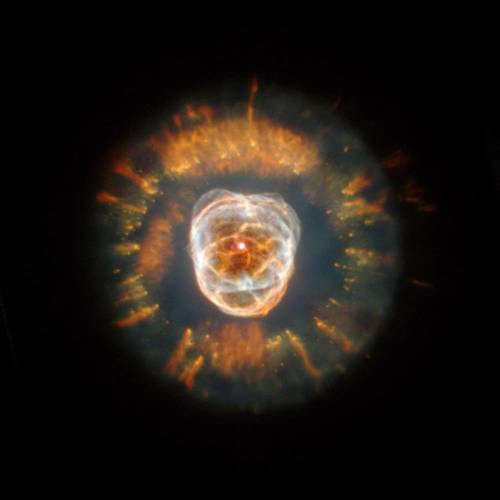
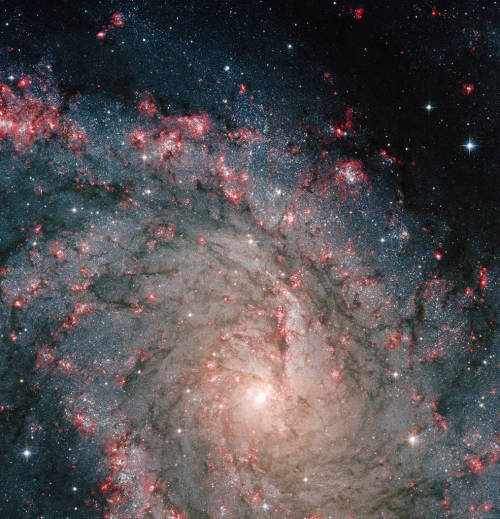
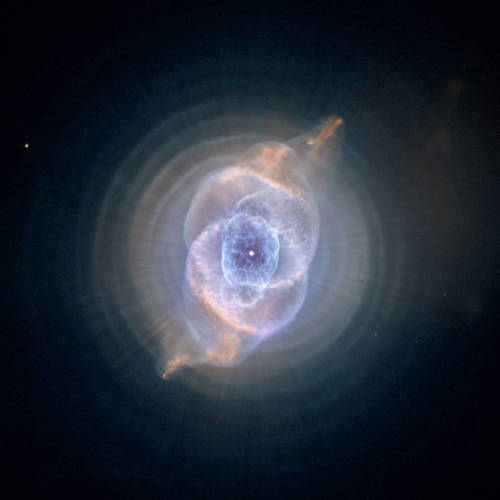
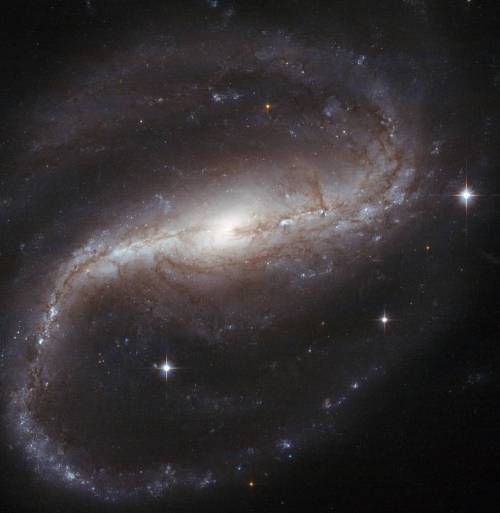
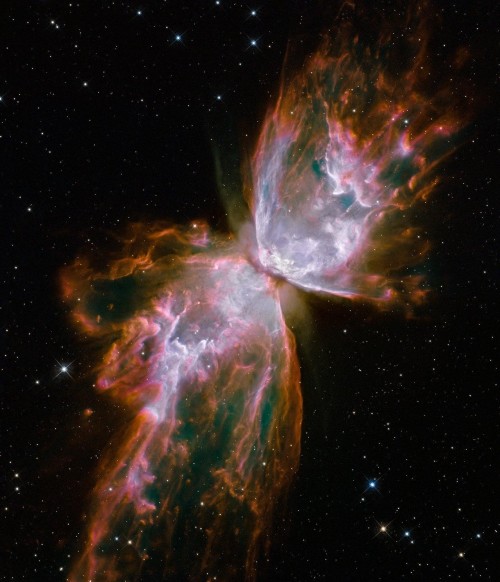

Be your own explorer ✨the cosmos is waiting...
From nearby clouds of gas and dust to remote galaxies that formed billions of years ago, tour the night sky with our Hubble Space Telescope’s new Caldwell catalog. The catalog of star clusters, galaxies and nebulas was first produced to highlight cosmic wonders visible to amateur astronomers. Since then Hubble has taken images of 95 out of the 109 objects, bringing these objects to life in exquisite detail.
While the objects can be observed using modest ground-based telescopes, Hubble’s Caldwell collection has been assembled for astronomers to see the finer details of each object in the night sky.
View the full collection here!
Make sure to follow us on Tumblr for your regular dose of space: http://nasa.tumblr.com.
International Space Station
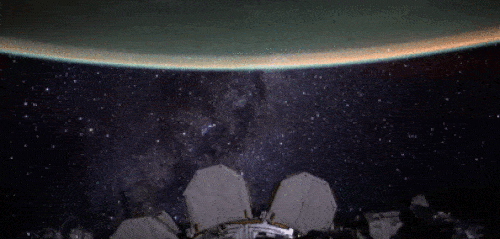
The International Space Station is an important and special place that is built on international cooperation and partnership. The station is a convergence of science, technology and human innovation that benefits and advances our global community here on Earth.

While the space station is an important aspect of our low-Earth orbit exploration, it is also the key to our next giant leap to deep space and our Journey to Mars. For example, our recent VEGGIE experiment aboard the space station is a critical aspect of long-duration exploration missions farther into the solar system. Food grown in space will be a resource for crew members that can provide them will essential vitamins and nutrients that will help enable deep space pioneering.
Another important experiment underway is the Twins Study that involves twin astronauts Scott and Mark Kelly. These investigations will provide insight into the subtle effects and changes that may occur in spaceflight as compared to Earth by studying two individuals who have the same genetics, but are in different environments for one year. You can follow Scott Kelly as he spends a year in space.
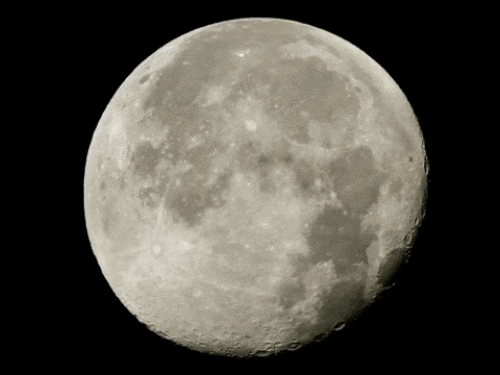
The space station is the second brightest object in the sky (after the moon, of course), and you don’t even need a telescope to see it! We can even tell you exactly when and where to look up to Spot the Station in your area!
So, as you look to spot the station in the sky, remember that even though it may look small from Earth, the crew onboard (and at home) are making contributions to international partnerships and global research.
Four Things ECOSTRESS Can See From Space
Our new instrument in space, the Ecosystem Spaceborne Thermal Radiometer Experiment on Space Station (ECOSTRESS), is designed to study how plants respond to heat and water stress by measuring the temperature of Earth's vegetation, but that’s not all it will do. Adding ECOSTRESS to the Space Station will also add to our understanding of volcanoes, fires, urban heat and coastal and inland waters.

1. Fires
ECOSTRESS's radiometer can detect all kinds of fires, but it may be most useful in recording small fires – new wildfires that are just beginning to grow. These have proven hard to study from satellite observations. ECOSTRESS has a pixel size of only 130 by 230 feet (40 by 70 meters), offering a much sharper view. "We'll be able to see a bonfire on a beach," ECOSTRESS scientist Simon Hook says.

Credit: USGS
2. Volcanoes
ECOSTRESS's thermal infrared imager will be able to spot new fissures and hotspots that can signal impending volcanic eruptions.

The Chiliques volcano in Chile was thought to be dormant until thermal images revealed new activity. Credit: NASA/METI/AIST/Japan Space Systems and U.S./Japan ASTER Science Team
3. Urban Heat
The heat generated by a large city can compound the health hazards of heat waves, particularly for the oldest and youngest city dwellers. Which neighborhoods suffer from heat the most? With the very detailed images from ECOSTRESS, we'll be able to see which mitigation efforts are keeping neighborhoods cool.

Urban areas can be up to 8 degrees warmer than surrounding suburban or natural landscapes, as seen here in a true-color image of the Atlanta area, top, and temperature data, bottom. Credit: NASA
4. Coastal and Inland Waters
Along coastlines and in large lakes, wind can push surface water aside allowing water from the depths to rise to the surface, bringing nutrients. These upwellings of cold water are important sources of nutrition for the coastal and lake plants and animals. ECOSTRESS can detect these smaller upwellings, providing valuable information for researchers.

Upwelling can be seen in satellite data. Here temperature data (top) and chlorophyll concentrations (bottom) are shown around the Isthmus of Tehuantepec in Mexico. Credit: MODIS Ocean Color Team/Norman Kuring
Read more about the ECOSTRESS mission at https://ecostress.jpl.nasa.gov/. Make sure to follow us on Tumblr for your regular dose of space: http://nasa.tumblr.com
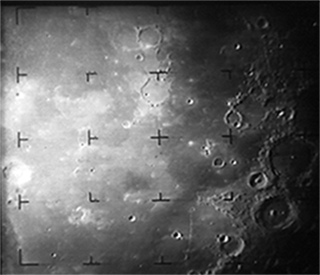
If #NationalCheeseDay has you thinking about the Moon, you're not alone. 🧀
In 1965, the Ranger 9 probe captured these sharp images of a cratered lunar surface just moments before its planned impact. What we learned paved the way for Apollo. #Apollo50th
Water on Mars!

Did you hear? New findings from our Mars Reconnaissance Orbiter (MRO) provide the strongest evidence yet that liquid water flows intermittently on present-day Mars.
Using an imaging spectrometer on MRO, we found hydrated minerals on slopes where mysterious streaks are seen on Mars. One thing that researchers noticed was that the darkish streaks appear to ebb and flow over time. During warm seasons, they darken and then fade in cooler seasons.

When discovered in 2010, these downhill flows known as recurring slope lineae (RSL) were thought to be related to liquid water. With the recent spectral detection of molecular water, we’re able to say it’s likely a shallow subsurface flow explains the darkening.
Mars is so cold, how could liquid water flow there? Great question! Since this liquid water is briny, the freezing point would be lower than that of pure water. Also, these saline slopes appear on Mars when temperatures are above minus 10 degrees Fahrenheit (minus 23 Celsius).
The dark, narrow streaks flowing downhill in the below image are roughly the length of a football field.

So there’s water, but how much? Currently we think this area has a very small amount of water, probably just enough to wet the top layer of the surface of Mars. The streaks are around four to five meters wide and 200 to 300 meters long.
Could humans drink this water? The salts in the water appear to be perchlorates, so you probably wouldn’t want to drink the water. It would most likely be very salty and would need to be purified before human consumption.
Perchlorate...What is that? A perchlorate is a salt that absorbs water from the air. Learn more about how it’s helping us unlock the mysteries of Mars in this video:
What’s next? We want to look for more locations where brine flows may occur. We have only covered 3% of Mars at resolutions high enough to see these features.
For more information on the Mars announcement, visit our Journey to Mars landing page. There is also a full recap of the press conference HERE, and a short recap below.
Make sure to follow us on Tumblr for your regular dose of space: http://nasa.tumblr.com
People of OSIRIS-REx
As OSIRIS-REx closes in on its target destination—asteroid Bennu—anticipation is building for the first-ever, close-up glimpse of this small world. It took thousands of people to come this far. Get to know a few members of the team:

1. Carl Hergenrother, Astronomy Working Group Lead & Strategic and Tactical Scientist
Job Location: University of Arizona, Tucson Expertise: Asteroids & Comets Time on mission: Since before there was a mission Age: 45 Hometown: Oakland, New Jersey
“When you’re observing Bennu with a telescope, you see it as a dot. … So when it actually becomes its own little world, it’s really exciting—and almost a little sad. Up until that point, it can be anything. And now, there it is and that’s it.”

2. Heather Roper, Graphic Designer
Job Location: University of Arizona, Tucson Job Title: Graphic Designer Expertise: Visual Communications Time on mission: 5 years Age: 25 Hometown: Tucson, Arizona
“I really like the challenge of visually depicting the science of the mission and getting to show people things that we can’t see.”

3. Jason Dworkin, Project Scientist
Job Location: NASA’s Goddard Space Flight Center, Greenbelt, Maryland Expertise: Origin-of-life Chemistry Time on mission: Since before there was a mission Age: 49 Hometown: Houston, Texas
"In 10th grade, I had to do a science fair project for biology class. … I wanted to expand on chemistry experiments from old journal papers; but that could have been dangerous. I got in touch with … a pioneering scientist in origin-of-life research and asked for advice. He was worried that I would accidentally injure myself, so he invited me into his lab . . . that helped set my career.”

4. Sara Balram Knutson, Science Operations Lead Engineer
Job Location: University of Arizona, Tucson Expertise: Aerospace Engineering Time on mission: 6 years Age: 31 Hometown: Vacaville, California
“My dad was in the Air Force, so I grew up being a bit of an airplane nerd. When I was in high school, I really liked math, science, and anything having to do with flight. I looked for a field where I could combine all those interests and I found aerospace engineering.”

5. Nancy Neal Jones, Public Affairs Lead
Job Location: NASA’s Goddard Space Flight Center, Greenbelt, Maryland Expertise: Science Communications Time on mission: 7 years Age: 51 Hometown: New York, New York
“We’re going to a pristine asteroid to take a sample to bring to Earth. This means that my children and grandchildren, if they decide to go into the sciences, may have an opportunity analyze the Bennu samples.”

6. Javier Cerna, Communications System Engineer
Job Location: Lockheed Martin Corporation, Littleton, Colorado Expertise: Electrical Engineering Time on mission: Since before there was a mission Age: 37 Hometown: Born in Mexico City, and raised in Los Angeles, and Las Cruces, New Mexico
“One thing we do is evaluate how strong the signal from the spacecraft is—kind of like checking the strength of the WiFi connection. Basically, we’re ensuring that the link from the spacecraft to the ground, and vice versa, stays strong.”

7. Jamie Moore, Contamination Control Engineer
Job Location: Lockheed Martin Corporation, Littleton, Colorado Expertise: Chemistry Time on mission: 5 years Age: 32 Hometown: Apple Valley, Minnesota & Orlando, Florida
“I was there for just about every deployment of the sampling hardware to make sure it was kept clean and to evaluate the tools engineers were using. I even went to Florida with the spacecraft to make sure it stayed clean until launch.”

8. Mike Moreau, Flight Dynamics System Manager
Job Location: NASA’s Goddard Space Flight Center, Greenbelt, Maryland; Littleton, Colorado Expertise: Mechanical and aerospace engineering Time on mission: 5 years Age: 47 Hometown: Swanton, Vermont
“I grew up on a dairy farm in Vermont, which is a world away from working for NASA. But I can trace a lot of my success as an engineer and a leader back to things that I learned on my dad’s farm.”

9. Johnna L. McDaniel, Contamination Control Specialist
Job Location: NASA’s Kennedy Space Center, Florida Expertise: Anti-Contamination Cleaning Time on Mission: 4 months Age: 53 Hometown: Cocoa, Florida
“The clothing requirements depend on the payload. With OSIRIS-Rex, we could not wear any items made with nylon. This was because they have amino acid-based polymers in them and would have contaminated the spacecraft. I even had a special bucket for mopping.”

10. Annie Hasten, Senior Financial Analyst
Job Location: Lockheed Martin Corporation, Steamboat Springs, Colorado Expertise: Business Time on Mission: 1.5 years Age: 30 Hometown: Littleton, Colorado
“I think it’s a pleasure to work with people who are so intensely passionate about their jobs. These engineers are doing their dream jobs, so you feed off of that positive energy.”
Make sure to follow us on Tumblr for your regular dose of space: http://nasa.tumblr.com
How Do Hurricanes Form?
Hurricanes are the most violent storms on Earth. People call these storms by other names, such as typhoons or cyclones, depending on where they occur.

The scientific term for ALL of these storms is tropical cyclone. Only tropical cyclones that form over the Atlantic Ocean or eastern and central Pacific Ocean are called “hurricanes.”

Whatever they are called, tropical cyclones all form the same way.
Tropical cyclones are like giant engines that use warm, moist air as fuel. That is why they form only over warm ocean waters near the equator. This warm, moist air rises and condenses to form clouds and storms.

As this warmer, moister air rises, there's less air left near the Earth's surface. Essentially, as this warm air rises, this causes an area of lower air pressure below.

This starts the 'engine' of the storm. To fill in the low pressure area, air from surrounding areas with higher air pressure pushes in. That “new” air near the Earth's surface also gets heated by the warm ocean water so it also gets warmer and moister and then it rises.

As the warm air continues to rise, the surrounding air swirls in to take its place. The whole system of clouds and wind spins and grows, fed by the ocean’s heat and water evaporating from the surface.
As the storm system rotates faster and faster, an eye forms in the center. It is vey calm and clear in the eye, with very low air pressure.

Tropical cyclones usually weaken when they hit land, because they are no longer being “fed” by the energy from the warm ocean waters. However, when they move inland, they can drop many inches of rain causing flooding as well as wind damage before they die out completely.
There are five types, or categories, of hurricanes. The scale of categories is called the Saffir-Simpson Hurricane Scale and they are based on wind speed.

How Does NASA Study Hurricanes?
Our satellites gather information from space that are made into pictures. Some satellite instruments measure cloud and ocean temperatures. Others measure the height of clouds and how fast rain is falling. Still others measure the speed and direction of winds.

We also fly airplanes into and above hurricanes. The instruments aboard planes gather details about the storm. Some parts are too dangerous for people to fly into. To study these parts, we use airplanes that operate without people.
Learn more about this and other questions by exploring NASA Space Place and the NASA/NOAA SciJinks that offer explanations of science topics for school kids.
Make sure to follow us on Tumblr for your regular dose of space: http://nasa.tumblr.com.
Credits: NASA Space Place & NASA/NOAA SciJinks
That’s a wrap! Thank you for all the fantastic questions!
Recent University of Idaho graduate Hannah Johnson and NASA’s STEM on Station activity Manager Becky Kamas answered your questions about our Student Payload Opportunity with Citizen Science (SPOCS).
Checkout their full Answer Time.
SPOCS helps fund student experiments and launches them to the International Space Station to conduct research. Learn more about SPOCS and this year’s student teams building experiments for space HERE.
If today’s Answer Time got you fired up, HERE are other ways you can get involved with NASA as a student. We have contests, challenges, internships, games, and more!
Make sure to follow us on Tumblr for your regular dose of space: http://nasa.tumblr.com.
-
 iacyper9 liked this · 1 year ago
iacyper9 liked this · 1 year ago -
 john-erby liked this · 3 years ago
john-erby liked this · 3 years ago -
 2reputationpegacorns liked this · 3 years ago
2reputationpegacorns liked this · 3 years ago -
 theartisticscientistsworld liked this · 4 years ago
theartisticscientistsworld liked this · 4 years ago -
 i-c-stars liked this · 5 years ago
i-c-stars liked this · 5 years ago -
 jewelart liked this · 5 years ago
jewelart liked this · 5 years ago -
 cosmofrog liked this · 5 years ago
cosmofrog liked this · 5 years ago -
 franticbagel liked this · 5 years ago
franticbagel liked this · 5 years ago -
 h0miecidal reblogged this · 6 years ago
h0miecidal reblogged this · 6 years ago -
 fcirfolk liked this · 6 years ago
fcirfolk liked this · 6 years ago -
 hyndia-r liked this · 7 years ago
hyndia-r liked this · 7 years ago -
 some-ant liked this · 7 years ago
some-ant liked this · 7 years ago -
 holometabolism reblogged this · 7 years ago
holometabolism reblogged this · 7 years ago -
 gracelessgirl reblogged this · 7 years ago
gracelessgirl reblogged this · 7 years ago -
 gracelessgirl liked this · 7 years ago
gracelessgirl liked this · 7 years ago -
 i-hate-germs-blog liked this · 7 years ago
i-hate-germs-blog liked this · 7 years ago -
 traveling-in-pears liked this · 7 years ago
traveling-in-pears liked this · 7 years ago -
 theartintheblood reblogged this · 7 years ago
theartintheblood reblogged this · 7 years ago -
 murr-supremacy liked this · 7 years ago
murr-supremacy liked this · 7 years ago -
 falseneun liked this · 7 years ago
falseneun liked this · 7 years ago -
 mlcgirl liked this · 7 years ago
mlcgirl liked this · 7 years ago -
 boysandfreewifi liked this · 7 years ago
boysandfreewifi liked this · 7 years ago -
 mehxsquared liked this · 7 years ago
mehxsquared liked this · 7 years ago -
 schlegelbagel33-blog liked this · 7 years ago
schlegelbagel33-blog liked this · 7 years ago -
 hunnydewnot liked this · 7 years ago
hunnydewnot liked this · 7 years ago -
 cappucino-commie reblogged this · 8 years ago
cappucino-commie reblogged this · 8 years ago -
 mangosorbetenthusiast reblogged this · 8 years ago
mangosorbetenthusiast reblogged this · 8 years ago -
 starlove137 reblogged this · 8 years ago
starlove137 reblogged this · 8 years ago -
 im-drowning-in-tears liked this · 8 years ago
im-drowning-in-tears liked this · 8 years ago -
 jacelys liked this · 8 years ago
jacelys liked this · 8 years ago -
 sandwich-finisher liked this · 8 years ago
sandwich-finisher liked this · 8 years ago -
 the-eight-legged reblogged this · 8 years ago
the-eight-legged reblogged this · 8 years ago -
 the-eight-legged liked this · 8 years ago
the-eight-legged liked this · 8 years ago -
 n0bodybymitski liked this · 8 years ago
n0bodybymitski liked this · 8 years ago -
 warnerwolffilms liked this · 8 years ago
warnerwolffilms liked this · 8 years ago -
 c0unter-cultured liked this · 8 years ago
c0unter-cultured liked this · 8 years ago -
 samantha-simmons-blog liked this · 8 years ago
samantha-simmons-blog liked this · 8 years ago -
 hewhoiswithoutcinnamonroll-blog1 liked this · 8 years ago
hewhoiswithoutcinnamonroll-blog1 liked this · 8 years ago -
 shadow-of-an-awkward-girl reblogged this · 8 years ago
shadow-of-an-awkward-girl reblogged this · 8 years ago -
 nowanderimlost reblogged this · 8 years ago
nowanderimlost reblogged this · 8 years ago -
 0800heart liked this · 8 years ago
0800heart liked this · 8 years ago -
 fillthevoid-with-space reblogged this · 8 years ago
fillthevoid-with-space reblogged this · 8 years ago
Explore the universe and discover our home planet with the official NASA Tumblr account
1K posts